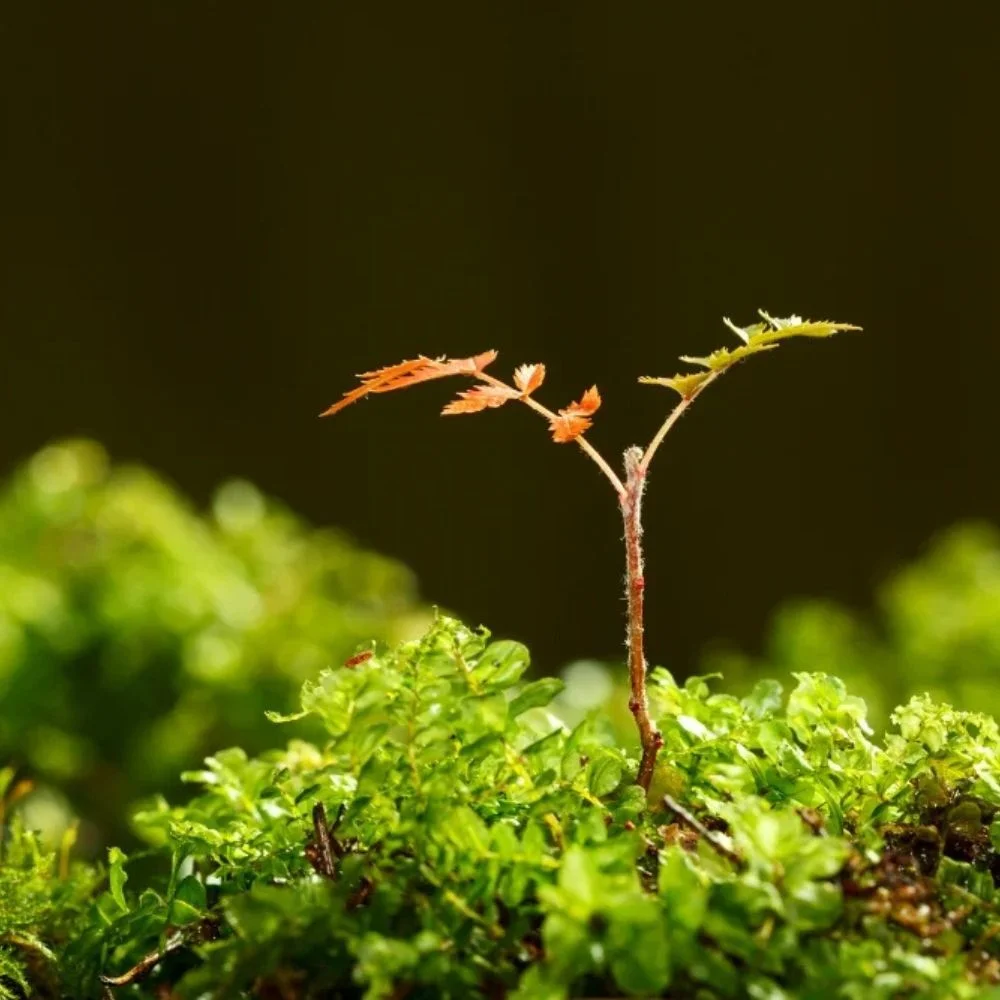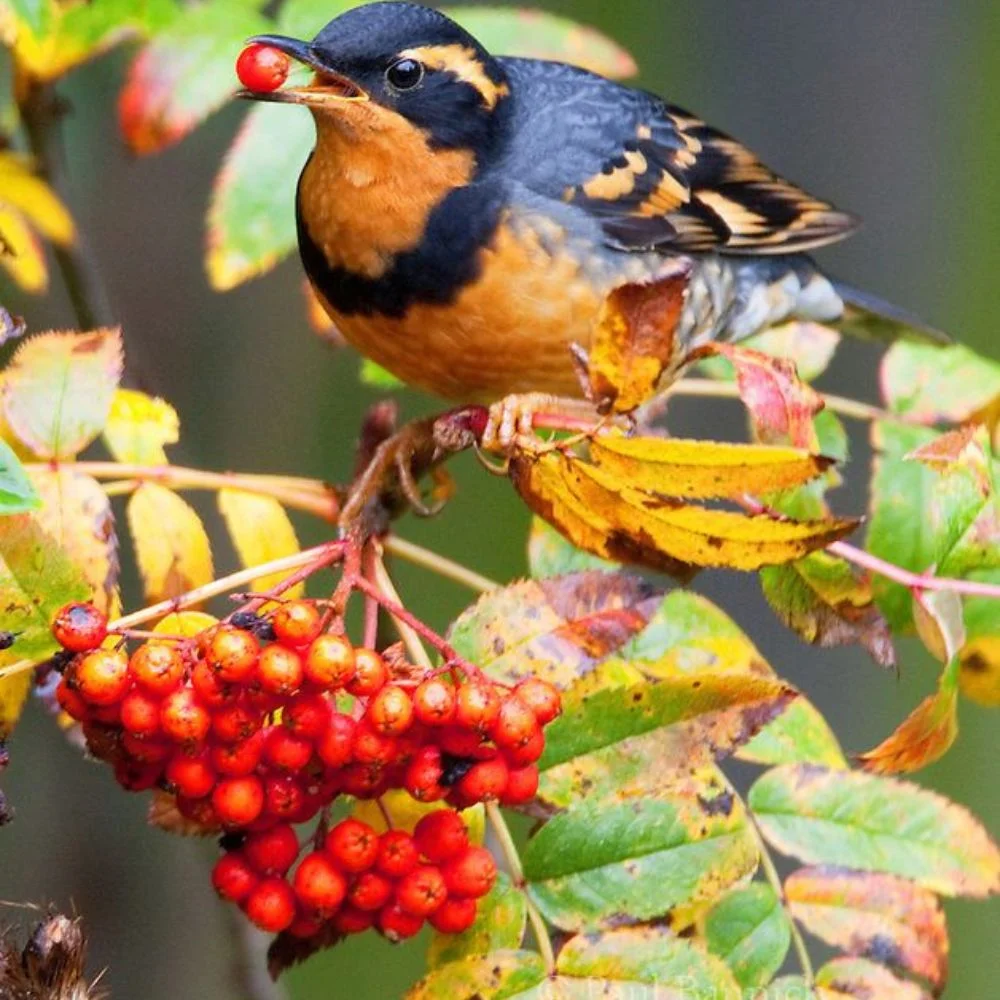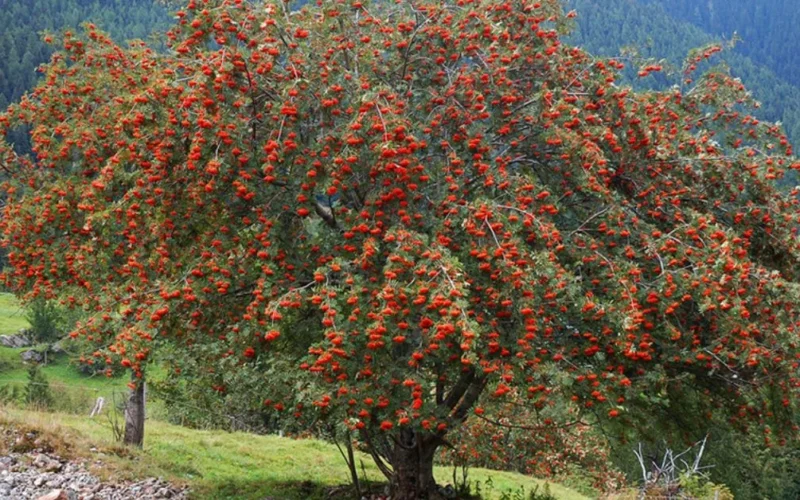Table of Contents
What Is a Mountain Ash Tree?
Although it’s called a mountain ash, this tree isn’t related to true ash trees. It’s part of the Sorbus genus and more closely related to apples and roses than the ash tree. There are many types of mountain ash, but two of the most well-known are:
- European Mountain Ash (Sorbus aucuparia)
- American Mountain Ash (Sorbus americana)
Both species are loved for their upright growth, feather-like leaves, creamy-white blossoms in spring, and clusters of orange-red berries in the fall.
Fun Fact: In Celtic folklore, mountain ash trees were thought to ward off evil spirits, earning them the nickname “rowan,” which comes from the Old Norse word for “charm.”
Why Choose a Mountain Ash for Your Garden?
1. Year-Round Visual Interest
Mountain ash trees change beautifully with the seasons:
- Spring: Tiny white flowers bloom in flat-topped clusters.
- Summer: Lush green, fern-like foliage offers dappled shade.
- Fall: The tree blazes in hues of red, orange, and gold.
- Winter: Bright red berries hang like ornaments, often attracting birds.
2. Wildlife Magnet
Bright berries especially attract robins, waxwings, and many other fruit-loving birds. If you’re a birdwatcher, mountain ash trees offer front-row entertainment.
3. Low Maintenance
Once established, these trees are fairly easy-going. They tolerate cold climates, are moderately drought-resistant, and adapt well to a variety of soils.
4. Compact & Manageable Size
Unlike some towering trees, most mountain ashes grow to about 20–40 feet, making them perfect for smaller yards or as a decorative focal point.
Growing Mountain Ash: Beginner-Friendly Guide
Here’s how to get started:
1. Choosing the Right Variety
Depending on your region and space, you may want to pick between:
- European Mountain Ash: Hardy in USDA Zones 3–6. Tolerates a range of soils.
- American Mountain Ash: Better for cooler climates (Zones 2–5), native to eastern North America.
Want something smaller? Try dwarf varieties like Sorbus reducta, which work well in small gardens or even containers.
2. Where to Plant

Mountain ashes prefer:
- Full sun to partial shade
- Well-drained soil (avoid heavy clay if possible)
- Choose a location where the air moves freely to help keep the tree healthy and reduce the risk of disease.
3. Planting Tips
- Dig a hole wide enough to be double the root ball’s size, but no deeper than the root ball itself to ensure proper planting.
- Loosen roots gently before planting.
- Backfill with native soil mixed with compost.
- Give the tree a deep watering, then add mulch around the base to help lock in soil moisture
How to Care for Your Mountain Ash Tree?
1. Watering
For the first couple of years, young trees need consistent watering. Once established, mature trees typically only require extra water during long dry spells.
2. Fertilizing
Use a slow-release fertilizer with balanced nutrients early in spring to support healthy tree growth. Avoid over-fertilizing, which can encourage weak growth.
3. Pruning
Prune in late winter or early spring to:
- Remove dead or diseased branches
- Maintain shape
- Improve airflow
Common Problems
Unfortunately, mountain ash trees can be susceptible to a few issues:
- Fire blight
- Rust and leaf spot diseases
- Borer insects
Creative Ways to Use Mountain Ash
The mountain ash tree offers more than just good looks. Here are some tips to help you get the best results:
1. Focal Point Tree
Plant it in the center of your yard or garden bed; it draws the eye and becomes a seasonal centerpiece.
2. Bird-Friendly Garden Feature

Combine your mountain ash with other bird-attracting plants like serviceberry, dogwood, or elderberry.
3. Seasonal Decor
The berries can be harvested (carefully) and used in natural wreaths and winter arrangements.
The Surprising Benefits of Mountain Ash
Beyond its visual appeal, the mountain ash has some unique and practical benefits.
1. Medicinal Uses
Traditionally, the berries were used in folk remedies for sore throats, gout, and diarrhea. However, note that raw berries can be mildly toxic and should never be eaten without proper preparation (like cooking or fermenting).
2. Eco-Friendly
These trees improve biodiversity by supporting pollinators and birds. Their leaf litter even helps nourish the soil.
3. Cultural Significance
Used in protective charms, mountain ash has been seen as a “guardian tree” in cultures from the British Isles to Scandinavia.
Frequently Asked Questions
Q1. Are mountain ash berries edible?
Cooked berries can be used in jellies and wines, but raw berries are astringent and mildly toxic. Stick to ornamental or bird-feeding purposes unless you know how to process them safely.
Q2. How fast does mountain ash grow?
Under ideal conditions, it typically grows steadily, adding about one to two feet each year.
Q3. Is mountain ash invasive?
Not usually. European varieties can spread if conditions are right, but they’re not considered aggressive in most regions.
Q4. How long do mountain ash trees live?
Most live 30–50 years, though some healthy specimens can last longer with proper care.
Conclusion
If you’re looking for a tree that offers four-season beauty, supports wildlife, and asks for very little in return, the mountain ash should be high on your list. From spring blooms to fall berries and winter wildlife action, it’s a standout in any landscape. Whether you’re a beginner gardener or just looking to diversify your green space, this tree adds a mix of elegance and ecological value. Plant one today and enjoy a touch of mountain magic right at home.








